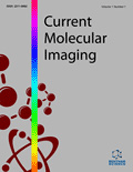Abstract
The default mode network (DMN) is assumed as a set of brain regions that show increased activity during the resting-state condition and suppressed activity during the demanding task condition. Accumulating evidence from functional imaging studies such as functional magnetic resonance imaging (fMRI) and positron emission tomography (PET) has revealed that alterations in DMN is present in aging, many psychiatric and neurological disorders. In Alzheimer’s disease (AD), for example, the distribution of Aβ-amyloid protein (Aβ) deposition in the brain is considerably overlapped over the DMN. It is now considered that this Aβ accumulation is not only specific to the AD brain but to some cognitively normal elderly people. The Aβ accumulation seen in the DMN may be an ominous sign in the seemingly normal persons because these subjects with high Aβ deposition are very likely to develop AD in the future. Our recent study on the cognitive and physiological implications of Aβ accumulation to the DMN function in normal elderly people using PET has shown that the amount of Aβ deposits is negatively correlated with the DMN function, and the lower function of DMN is associated with poorer working memory performance. As expected, Aβ deposition in the brain, however minute the degree of its accumulation can be,may cause neuronal dis coordination in the DMN along with poor working memory in normal aging. Although articles on fMRI-based DMN activity are profuse, there are few papers on molecular imagingbased study on the DMN. In this paper, alterations in metabolism and neuro chemical responses in the DMN in aging and brain disorders are reviewed.
Keywords: Amyloid deposition, default mode network, glucose metabolism, neurotransmitter, positron emission tomography.
 17
17

